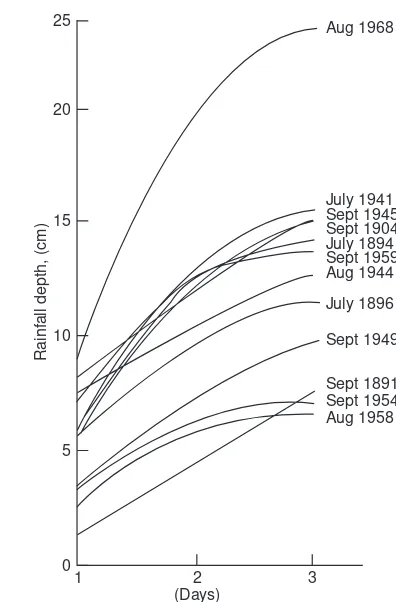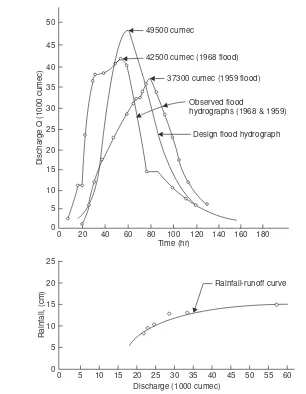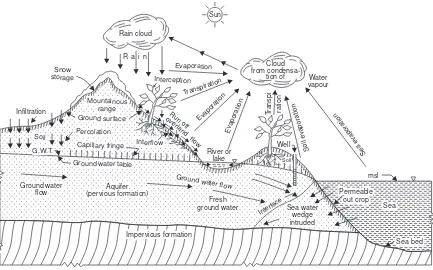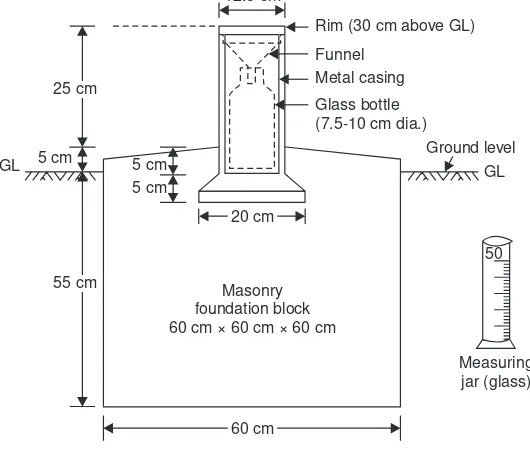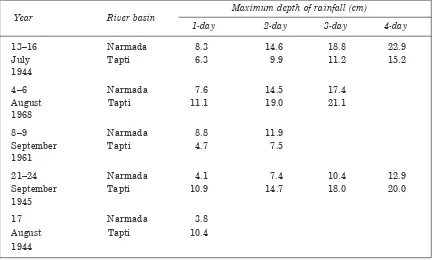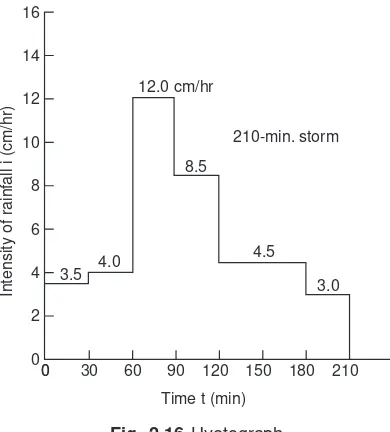Informasi Dokumen
- Penulis:
- H.M. Raghunath
- Sekolah: New Age International (P) Ltd.
- Mata Pelajaran: Hydrology
- Topik: This Page Is Blank
- Tipe: Book
- Tahun: 2006
- Kota: New Delhi
Ringkasan Dokumen
I. Introduction
Hydrology, as a branch of Earth Science, plays a crucial role in assessing, developing, and managing water resources globally. Recognizing its importance, the United Nations declared the International Hydrological Decade (1965-1974) to promote hydrological education, research, and data collection. This section introduces the foundational concepts of hydrology, emphasizing the necessity of understanding water resource dynamics for sustainable development.
II.
The global water resource distribution indicates that only 2.8% of water is fresh, with a significant portion locked in glaciers. This section provides a statistical overview of water availability, highlighting the limited fresh water accessible for human use. Understanding this distribution is vital for formulating effective water management strategies and policies.
III.
This section outlines the major river basins in India, detailing their water potential and significance in the hydrological landscape. The data presented serves as a foundation for understanding regional water availability and its implications for agricultural and urban planning in India.
IV.
The Tapti Basin study illustrates the practical application of hydrological principles in a specific context. It examines the basin's characteristics, rainfall patterns, and flood risks, providing a real-world example of hydrological analysis. This case study enhances students' comprehension of hydrology's role in flood management and resource allocation.
V.
This section describes the hydrologic cycle, emphasizing its phases: evaporation, precipitation, and runoff. Understanding these processes is crucial for civil engineers and hydrologists, as it informs the design of water management systems and flood control measures. The cycle's continuous nature underscores the need for sustainable practices in water resource management.
VI.
Different forms of precipitation, including rain, snow, and hail, are discussed in this section. Understanding these forms is essential for accurate weather forecasting and hydrological modeling, which are critical for effective water resource management and disaster preparedness.
VII.
The scope of hydrology encompasses flood prediction, water yield assessment, and groundwater development. This section highlights the various applications of hydrological studies, emphasizing their importance in infrastructure planning and environmental conservation. The knowledge gained here is pivotal for students pursuing careers in civil engineering and environmental science.
VIII.
Adequate data is crucial for hydrological analysis. This section lists the types of data required, including climatological, hydrometeorological, and stream-flow records. Understanding data collection methods and their significance in hydrological studies is vital for students and professionals aiming to conduct reliable research.
IX.
The hydrologic equation represents the conservation of mass within a hydrological system. This fundamental principle is critical for modeling water flow and storage changes, enabling effective water management strategies. Students learn to apply this equation in various hydrological contexts, enhancing their analytical skills.
X. Precipitation
This section delves deeper into precipitation, categorizing it into types and measurement techniques. Understanding how to accurately measure and analyze precipitation is essential for hydrologists and engineers in designing effective drainage and irrigation systems.
XI.
Different types of precipitation—thermal convection, frontal, orographic, and cyclonic—are explored. This knowledge is crucial for predicting weather patterns and understanding their implications on water resource management, especially in regions prone to flooding or drought.
XII.
This section discusses various methods of measuring precipitation, including non-recording and recording gauges. Understanding these measurement techniques equips students with practical skills necessary for fieldwork and data collection in hydrology.
XIII.
The use of radar technology in studying storm mechanics enhances precipitation data accuracy. This section emphasizes the integration of advanced technology in hydrological studies, showcasing its importance in modern meteorological practices.
XIV.
This section provides guidelines for the optimal placement of rain gauges, ensuring accurate data collection. Understanding rain-gauge density is essential for effective hydrological monitoring and analysis, particularly in diverse geographical settings.
XV.
The calculation of mean areal depth of precipitation is explored, highlighting methods such as arithmetic average and Thiessen polygon. This knowledge is crucial for hydrologists in estimating rainfall over large areas, aiding in water resource assessments.
XVI. Water Losses
This section examines the various forms of water loss, including evaporation and transpiration. Understanding these processes is critical for developing effective water conservation strategies, particularly in agricultural and urban settings.
XVII. Runoff
Runoff is a key component of the hydrological cycle, influenced by various factors. This section discusses the estimation of runoff and its significance in water resource management, particularly for flood forecasting and irrigation planning.
XVIII. Hydrographs
Hydrographs are essential tools for analyzing streamflow over time. This section covers the components and interpretation of hydrographs, equipping students with skills to assess river behavior and manage water resources effectively.
XIX. Stream Gauging
This section outlines methods for measuring stream flow, emphasizing the importance of accurate gauging for hydrological studies. Understanding stream gauging techniques is vital for students pursuing careers in hydrology and environmental engineering.
XX. Ground Water
Groundwater plays a crucial role in the hydrological cycle. This section discusses aquifer types and groundwater management strategies, highlighting the significance of sustainable practices in groundwater extraction and conservation.
. Floods-Estimation and Control
This section explores flood estimation methods and control measures. Understanding flood dynamics is essential for civil engineers and planners to design effective flood control systems and ensure public safety.
. Flood Routing
Flood routing techniques are discussed in this section, emphasizing their importance in managing flood risks. This knowledge is critical for engineers involved in designing reservoirs and flood control infrastructure.
. Storage, Pondage and Flow Duration Curves
This section examines the concepts of storage and pondage in relation to flow duration curves. Understanding these concepts is essential for effective water resource management and infrastructure design.
. Reservoir Sedimentation
Reservoir sedimentation impacts storage capacity and water quality. This section discusses sediment movement and control measures, highlighting the importance of sediment management in reservoir planning.
. Arid, Semi-Arid and Humid Regions
This section discusses the hydrological characteristics of different climatic regions. Understanding these differences is crucial for developing tailored water management strategies in diverse environments.
.PART B: ADVANCED TOPICS
This section introduces advanced hydrological topics, including linear regression and statistical analysis of hydrological data. These concepts are essential for students seeking to deepen their understanding of hydrological modeling and data interpretation.
. Linear Regression
Linear regression techniques are explored in this section, emphasizing their application in hydrological data analysis. Understanding these techniques enhances students' ability to model relationships between variables in hydrology.
. Statistical and Probability Analysis of Hydrological Data
This section covers statistical methods for analyzing hydrological data, including probability assessments. These skills are crucial for hydrologists in making informed decisions based on data analysis.
. Flood Frequency—Probability and Stochastic Methods
This section discusses methods for assessing flood frequency using probability and stochastic approaches. Understanding these methods is vital for effective flood risk management and infrastructure design.
. Mathematical Models in Hydrology
Mathematical modeling plays a significant role in hydrology. This section explores various modeling techniques, emphasizing their importance in simulating hydrological processes and predicting water behavior.
. Instantaneous Unit Hydrograph (IUH)
The concept of the Instantaneous Unit Hydrograph is discussed in this section, highlighting its application in hydrological modeling. Understanding IUH is crucial for hydrologists in flood forecasting and water resource management.
. Cloud Seeding
Cloud seeding techniques and their operational aspects are explored in this section. Understanding cloud seeding is essential for hydrologists and meteorologists aiming to enhance precipitation and manage water resources effectively.
Referensi Dokumen
- Storage and Flood Routing ( Carter R.W. and Godfrey, R.G. )
- An approach to Flood Stage Forecasting ( Chander S., et. al. )
- Digital Simulation in Hydrology: Stanford Watershed Model IV ( Crawford N.H. and Linsley R.K. )
- A General Theory of Unit Hydrographs ( Dooge J.C.I. )
- Long-term Storage Capacity of Reservoirs ( Hurst H.E. )



